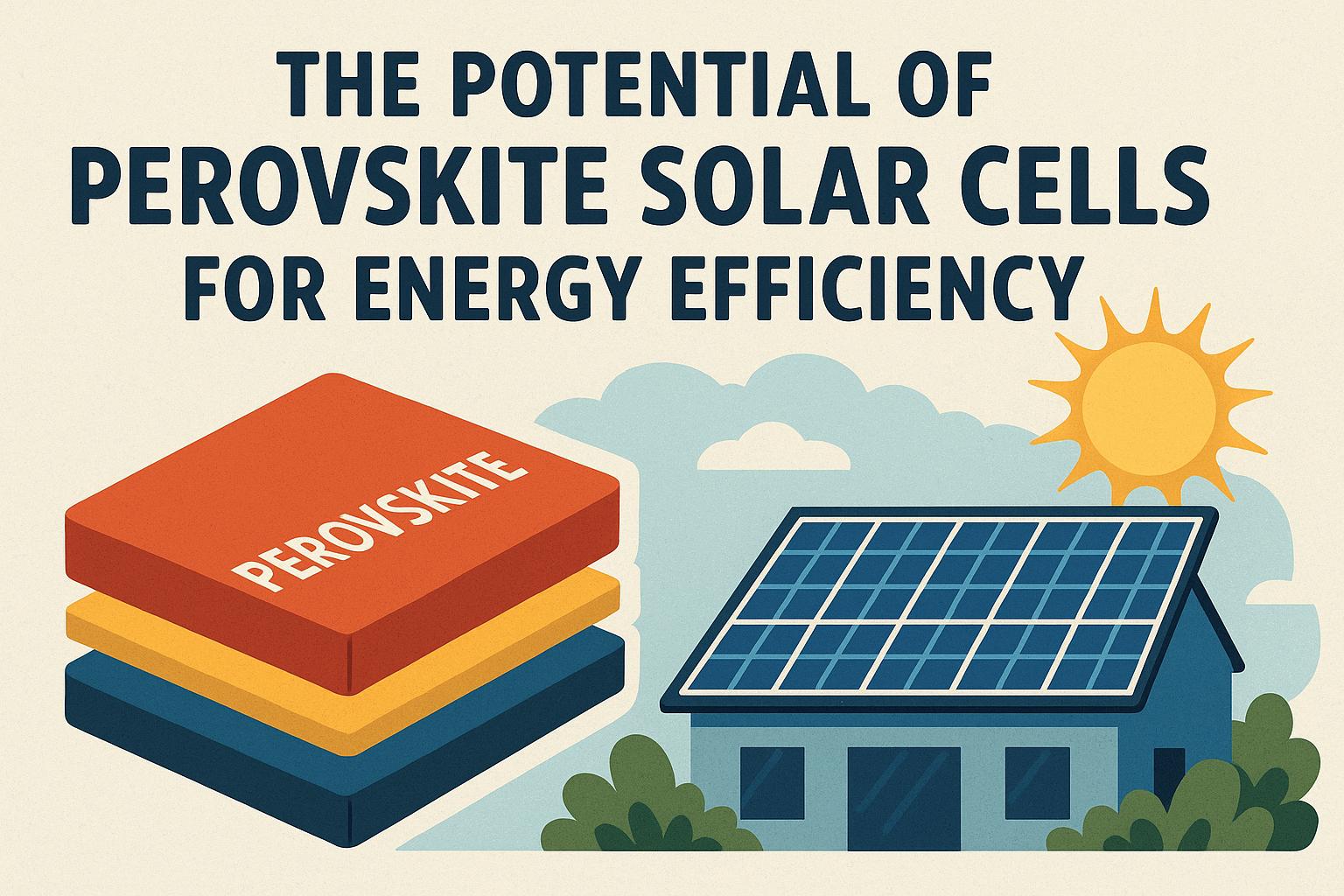
The Potential of Perovskite Solar Cells for Energy Efficiency
The ongoing evolution of photovoltaic technology represents one of the most dynamic areas within the field of renewable energy. Among the various innovations, perovskite solar cells have garnered significant attention as a viable alternative to the conventional silicon-based solar cells that are widely used today. This is primarily attributable to their superior potential for higher energy conversion efficiency and cost-effectiveness. A comprehensive examination of the distinctive characteristics of perovskite materials, alongside their intrinsic role in enhancing solar energy production, can delineate the substantial advantages they offer.
Understanding Perovskite Materials
Perovskite materials are distinguished by their unique crystallographic structure, typically expressed in the formula ABX3. This structure facilitates several advantageous properties such as excellent light absorption, superior charge-carrier mobility, and tunable bandgaps. Together, these properties make perovskite materials exceptionally well-suited for applications within solar energy technologies.
Test environments within laboratories have recorded perovskite solar cells achieving impressive efficiency rates—sometimes even exceeding those of traditional silicon-based cells. This places a strong emphasis on the ongoing pursuit of scaling up production from lab-sized prototypes to full-scale, commercially viable solar cells. Continued research in improving the stability and performance longevity of perovskite cells is essential as these technologies progress toward real-world application.
Manufacturing and Cost Advantages
The manufacturing process associated with perovskite solar cells offers some distinct advantages over their silicon-based counterparts, particularly in terms of cost-effectiveness. Typically, the production of perovskite cells employs low-temperature, solution-based techniques that facilitate substantial reductions in manufacturing costs. This affordability has the potential to lower the overall cost of solar energy, thereby making renewable energy solutions more accessible to a wide array of markets across different socio-economic strata.
Challenges and Stability
Despite the auspicious attributes of perovskite solar cells, several challenges remain prominent as potential hindrances to their widespread adoption. Chief among these is the issue of stability under environmental conditions typical of solar deployment, such as high humidity and elevated temperatures. As a response to these challenges, a significant portion of contemporary research is devoted to identifying new materials and innovative methods with the aim of augmenting the durability and resilience of perovskite cells.
Environmental Impact and Sustainability
In addition to efficiency and economic considerations, the environmental impact stemming from the production and eventual disposal of solar cells is of paramount importance. Perovskite solar cells offer potential environmental benefits due to their lower energy requirements during the manufacturing process as compared to silicon-based solar cells. However, the presence of lead in some perovskite compositions poses a significant environmental hazard. It necessitates meticulous handling protocols and the exploration of lead-free alternatives or improved recycling methods to mitigate potential ecological detriments.
Advancements In Materials and Technology
Advancements in the components and synthesis processes of perovskite materials are shaping the future landscape of solar technology. Refinements in the structural and chemical makeup of these materials are yielding greater efficiencies and broadening the operational lifespan of perovskite solar cells. Continued exploration into hybrid organic/inorganic perovskite structures is particularly promising, aiming to reinforce structural integrity and enhance performance under varied operational conditions.
Material innovations are complemented by technological strides in manufacturing, where automation and precision engineering techniques are being integrated to upscale the production capabilities of perovskite solar cells. These manufacturing advancements contribute not only to cost reductions but also to achieving higher consistency and quality in the final solar cell products.
Future Prospects
The trajectory of research and development efforts is pivotal to unlocking the comprehensive potential harbored by perovskite solar cells. The convergence of technology, physics, and materials science is anticipated to bolster both the efficiency and stability of these solar technologies. For practitioners, academics, or enthusiasts aiming for a more profound understanding, delving into scholarly resources such as scientific journals and authoritative technology reports is recommended.
The broader adoption of perovskite solar cells presents a transformative opportunity within the renewable energy sector. They hold the promise to significantly influence global energy efficiency goals, enabling perovskite solar cells to serve as an instrumental component in achieving sustainable energy objectives. As maturation and refinement of this technology continue, its incorporation into energy grids worldwide could redefine the paradigms of power generation, distribution, and utilization.
In summary, perovskite solar cells carry the favorable prospect of becoming a cornerstone technology in the pursuit of cleaner, more efficient, and cost-effective energy solutions. As the operational capabilities of these cells reach maturity, their integration could markedly elevate the role of solar power within the global sustainable energy framework.